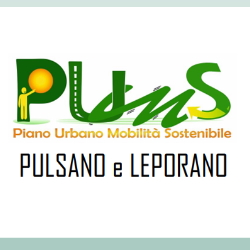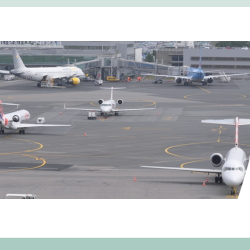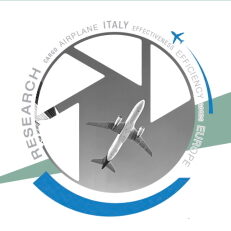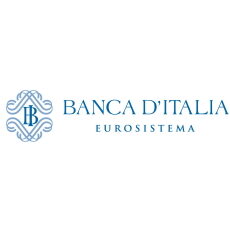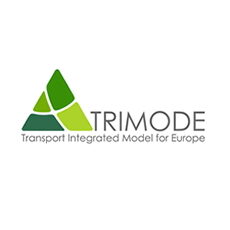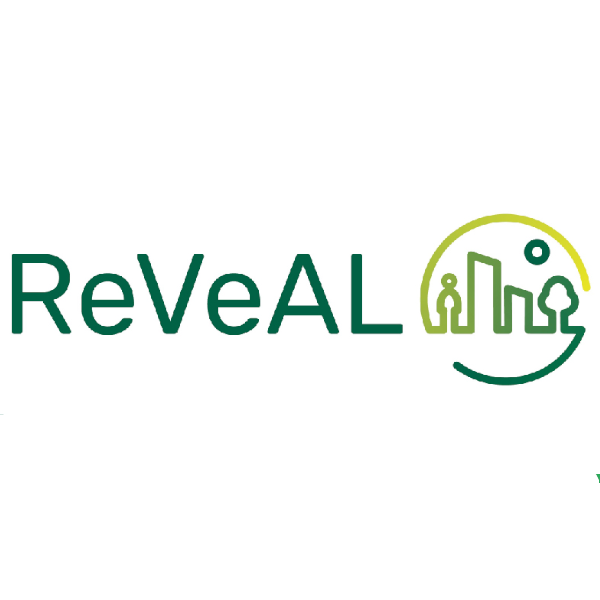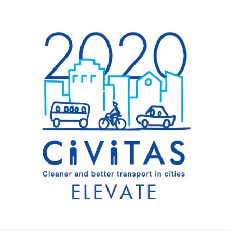- All
- African projects
- assessment
- assessment selected projects
- Assessment selected projects 2
- Assessment selected projects 3
- Assessment selected projects 4
- ASTRA
- Cost Benefit Analysis
- Electric mobility and ITS
- MOMOS
- planning
- planning selected projects
- planning selected projects 2
- planning selected projects 3
- planning selected projects 4
- planning selected projects 5
- projects
- Railways projects
- research
- research selected projects
- research selected projects 2
- research selected projects 3
- studies
- studies selected projects 1
- studies selected projects 2
- studies selected projects 3
- studies selected projects 4
- studies selected projects 5
- TRTingegneria
- TRUST
- urban mobility
- Drafting the Sustainable Urban Mobility Plan (SUMP) of the Municipalities of Pulsano and Leporano (Taranto, Italy) The Municipality of Pulsano (TA) has entrusted TRT Trasporti e Territorio with the drafting of the Sustainable Urban Mobility Plan (SUMP) of the Municipalities of Pulsano and Leporano. The Plan is co-financed and supervised by the Puglia Region as part of a wider regional programme linked to the development of SUMPs. TRT worked in synergy with other consultants in charge of participation activities as well as the preparation of the GIS platform dedicated to planning activities. With a total population of about 20,000 inhabitants, Pulsano and Leporano are the first two municipalities south of the city of Taranto, with which they develop a strong interdependence on the mobility front. In addition to the two inland historic urban centres, there are several marinas and tourist resorts along the 12 km of coastline, which determine a strong seasonal demand for transport. The drafting of the Plan has been developed in three distinct phases: after the reconstruction of the cognitive framework and the analysis of the current situation (phase 1), the objectives and strategies were first defined (Guidelines – phase 2) and then the single measures and policies for sustainable urban mobility were elaborated and detailed and then merged into the Plan Proposal (phase 3). The process of drafting the PUMS of Pulsano and Leporano took into account and integrated the indications of the European, national and regional PUMS guidelines. TRT used its own MOMOS strategic model for scenario assessment
- Nantes Debat Publique – Nantes Atlantique airport, traffic forecasts due diligence On January 2018, the French Prime Minister announced the decision to abandon the project for the construction of the new airport of Notre‐Dame‐des‐Landes and develop the existing Nantes‐Atlantique airport under the management of the Direction Générale de l’Aviation Civile (DGAC). The development of the Nantes‐Atlantic airport by 2040 was subject to prior consultation of the Commission Nationale du Débat Publique (CNDP), in order to inform in a transparent way the participants and discuss mobility needs, protection issues populations, environmental issues, socio‐economic impacts as well as territorial integration of the project. This consultation was envisaged to gather the opinions, stakeholder expectations and proposals for the development of the existing airport, and the options studied by the DGAC to meet needs in short (2025), medium (2030) and long (2040) terms. The objective of the analysis was to assess the solidity of the traffic forecast, taking into account the stakeholders’ opinions that evaluated the projections either underestimating the traffic potential or overestimating it due to taxation, stabilisation of the economic growth and climate change related regulations. The analysis of the traffic forecast was based on documents and studies related provided by the CNDP. Additional documentation was gathered in relation to air transport market development and transport demand projections at different geographical levels. The study identified the following factors as potentially influencing air traffic growth at the airport in the future. Operating airlines and networks. The penetration of low cost airlines in the air market of the region significantly supported the development of the airport traffic during the past. Relationship between airlines networks, travellers profile and socioeconomic context of the region. The network, especially for the international segment, is reflected by the profile of the travellers identified according to the surveys carried out. Competition with other French airports, although it was found low due the small size of the closest airport (Rennes) and negligible interaction with other comparable regional airports. Competition with high-speed trains and long-distance buses. The extensions of the TGV network might divert some air demand at 2030 (LGV Bretagne‐Pays de la Loire) and 2050 (Ligne nouvelle Ouest Bretagne Pays de la Loire). Policies for internalisation of external costs, because the French Government announced an environmental tax levied on airlines flying out of the country. The political scenario (i.e., Brexit) and macro‐economic (e.g., increase the oil price). The study found that the forecast of 2019 did not overestimate the development of the airport at 2030. At 2030‐2050, the growth seem less likely to happen, because the offer of connections could reach the saturation. For more information, please check Debat public website
- Airfreight transport in Italy, Cluster Cargo Aereo study The Cluster Cargo Aereo is a trade association of stakeholders operating in the air cargo market (forwarders, airlines, handlers). Its mission is to provide research, studies and statistics to promote an understanding of the sector and its challenges to relevant stakeholders. After its first study, released in 2019 and focusing on the supply of airfreight services (benchmarking of national and European airports competitiveness), the Cluster commissioned TRT a new study to better understand the airfreight demand and users preferences. TRT was committed to analyse the type of commodities and industrial sectors making the most use of airfreight services, identifying the factors that drive companies to modal and airport choice, including foreign terminals. The analysis was carried out through two main activities: a desk research, i.e. a statistical analysis of airfreight traffic flows (quantities/values) in the last 10 years and with respect to the most relevant types of commodities; a field research, namely a survey to a selection of relevant companies (export oriented manufacturers, freight forwarders, etc.) to gain insights on key research questions. With this study, TRT provided not only an up-to-date analysis of the national airfreight market, but also identified strategic actions for market development, particularly with respect to the sector-specific logistic needs coming from the survey. A particular focus was also devoted to Covid-19 emergency and to the related impacts on the airfreight sector. After the first study, presented in 2019 and focused on transport supply (competitiveness of national and European airports), and the second study on air freight transport demand of 2020, the Cluster has commissioned to TRT a new study in order to better understand the perception of the air cargo service in Italy. Therefore, TRT has realized a survey to the main manufacturing companies, integrated by an in-depth survey to the shipment companies, whose results have been introduced during the 5th Convention of the Air Cargo Observatory, where there was an audience of 200 stakeholders and companies of the sector. For more information (only available in italian) Airfreight transport in Italy, the study carried out by TRT. Go to the publication Digital conference for the presentation of the Cluster Cargo Aereo study. Milan, 26 October 2020. Download the presentation News (only available in italian) Press review by FEDESPEDI. Link Agroalimentare, ecommerce e aviocamionato: le tre scommesse del cargo aereo italiano. Aircargoitaly, 26 October 2020. Link Cluster Cargo Aereo e TRT – Secondo Studio Osservatorio Cargo Aereo. Fedespedi, 26 October 2020. Link La seconda edizione dell’Osservatorio cargo aereo: strategicità e potenzialità del trasporto aereo merci. Il giornale della logistica, 9 November 2020. Link La seconda edizione dell’Osservatorio cargo aereo: quando le merci volano. Il giornale della logistica, Dicembre 2020. Link
- Statistical sample survey on the international freight transport TRT has been again commissioned by the Banca d’Italia (Italian Central Bank) to carry out a four-year survey on the international freight transport, in order to: identify the unit costs of different transport modes for imports and exports; identify the components of ancillary costs; show in a matrix the abroad goods exchange; define the market share held by Italian actors in the maritime, air and rail transport sectors; estimate the turnover made by Italian ship-owners abroad. The surveys and analyzes carried out are used by the Banca d’Italia to estimate the Balance of Payments in Italy. As part of a consolidated partnership of more than twenty years, the activity constitutes the continuation of similar investigations conducted by TRT for Banca d’Italia since 1998. For more information (only available in italian) Survey on International Merchandise Transport 2023, June 2024. Link Survey on International Merchandise Transport 2022, June 2023. Link Survey on International Merchandise Transport 2021, June 2022. Link Survey on International Merchandise Transport 2020, June 2021. Link Survey on International Merchandise Transport 2019, June 2020. Link Survey on International Merchandise Transport 2018, June 2019. Link Survey on International Merchandise Transport 2017, June 2018. Link Survey on International Merchandise Transport 2016, July 2017. Link Italy’s international freight transport 2015, October 2016. Link The survey on the costs of international freight transport in Italy, September 2014. Link
- TRIMODE PROJECT: DEVELOPING FOR THE EUROPEAN COMMISSION A EUROPE-WIDE TRANSPORT MODEL INTEGRATED WITH ENERGY AND ECONOMY TRIMODE (TRansport Integrated MODel of Europe) has been developed to support policy assessment at the European level. Thanks to its modular structure a large variety of policy scenarios can be analysed and a wide set of impacts can be estimated. The overall TRIMODE integrated modelling system comprises several components belonging to three main blocks: a Transport network model, an Economy model and an Energy model. The geographical coverage of TRIMODE includes the EU countries; all Candidate and Potential candidate countries; UK, Iceland, Norway and Switzerland; other external zones. The zoning system is based on NUTS 3 zones. Within EU, sub-NUTS 3 zones are used where necessary, reaching a total of 1732 zones. The TRIMODE model covers the period between the year 2010 (base year) until the year 2050, providing results at 5 years steps The model was developed over the years 2016 to 2020 on behalf of the European Commission by the consortium led by TRT Trasporti e Territorio and composed by PTV AG, E3MLab, MDS Transmodal and M-Five as key partners and ISI Fraunhofer, BHL and INRIX as subcontractors. The TRIMODE component models are developed in VISUM and GAMS with all additional coding outside these tools handled by PYTHON. These models are implemented within a single software platform. A web-based user interface allows to set up, run and analyse model results. Project flyer – Download THE TRIMODE INTEGRATED MODEL FOR EUROPE Presented at the European Transport Conference (ETC) 2017, the article provides an overview of the TRIMODE model and its applications, with some details on the passenger demand model and the network model. – Download TRIMODE FREIGHT & LOGISTICS MODEL OF EUROPE Presented at the European Transport Conference (ETC) 2017, the article describes TRIMODE’s freight demand model, specifying how links between economic transactions and freight transport flows are managed. – Download LONG-DISTANCE, MULTI-MODAL FREIGHT IN A CONTINENTAL TRANSPORTATION MODEL Presented at the Transportation Research Board (TRB) 2018 (and selected for publication in the Transportation Research Record), the article explains how two key characteristics of freight transport – multimodality and logistics – are modelled in TRIMODE – Download TRIMODE: INTEGRATED TRANSPORT MODEL FOR EUROPE Presented at the Transportation Research Board (TRB) 2018 (and selected for publication in the Transportation Research Record), the article explains how two key characteristics of freight transport – multimodality and logistics – are modelled in TRIMODE. – Download ENERGY AND FLEET MODELLING WITHIN THE TRIMODE INTEGRATED TRANSPORT MODEL FRAMEWORK FOR EUROPE Presented at the EURO Working Group on Transportation Meeting (EWGT) 2018, the article introduces TRIMODE’s energy and fleet model and explains its link to transport demand and the network model. – Download
- HiReach, a project funded by the Horizon 2020 EU research program, addressed the specific mobility needs of segments of the population who are vulnerable to transport poverty and social exclusion Context and overall objectives of the project HiReach addressed the specific mobility needs of those segments of the population vulnerable to transport poverty and social exclusion such as people with temporarily or permanent reduced mobility, children, young and elderly people, women, migrants, ethnic minorities, low income, unemployed and people living in isolated and deprived areas. The project also analysed geographical and spatial elements affecting transport poverty to figure out inclusive mobility options that can properly work in urban-peripheral, peri-urban, rural, and remote or deprived territories. By combining different attributes of available transport concepts and bottom-up initiatives with smart operational schemes and IT applications, HiReach was aimed at the creation of viable business models for small scale, modular and easily replicable mobility services that can be provided at affordable prices or with minimum subsidies, targeting low-density and transport poor segments of the population. The HiReach mechanism for exploring, generating and testing inclusive mobility solutions was based on the creative work of startups and innovative entrepreneurs, but also on social innovation through the direct involvement of different social groups as co-owners of the proposed solutions. The overall ambition was to generate project results in strict linkage with developers and final users. Fieldwork activities have been conducted in 6 European study regions: Counties of Esslingen and Göppingen (Baden-Württemberg, DE), Naxos and Small Cyclades (GR), Inner Area Southern Salento (Puglia Region, IT), Guarda (PT), Buzau (RO), North and South-East Luxembourg. TRT was the project coordinator, leading a 9-partner international consortium. Summary of the project work The first analytical phase of the project explored travel behaviour and social habits of targeted vulnerable groups while assessing their travel demand and mobility needs. An extensive desk research across the EU Member States condensed available data, recent trends and scientific literature associated with transport poverty by targeting spatial specificities, mobility socio-economic landscape(s) as well as visible and hidden mobility needs and attitudes. This step required also the (re)-elaboration of the concept of transport poverty including a complex assessment of inequality and disadvantage, distinguishing between transportation-related disadvantage, social disadvantage and social exclusion. A cornerstone of the HiReach approach was the micro-analysis conducted on the field in six different countries. A set of 47 interviews with experts and stakeholders and the direct involvement of 166 vulnerable users through different focus group sessions served as validation of desk research activities and mobilization of local communities as co-owners of the solutions. In particular, TRT conducted fielwork activities in the Southern Salento area, focusing on the transport challenges of women and people with reduced mobility. A visual and descriptive representation of the identified needs and attitudes, featuring also mixed vulnerability characteristics and traits, was transposed into the elaboration of 6 Personas (see HiReach Insight Package). The following exploratory phase critically assessed the limits and drawbacks of the current supply of public […]
- HARMONY, a project funded by the Horizon 2020 EU research program, applies an holistic approach for providing innovative spatial & transport planning tools to metropolitan and regional authorities, in order to support decision-making and lead a sustainable transition to a new mobility era The main objective of the HARMONY project was to develop a new generation of harmonised spatial and multimodal transport planning tools, modeling comprehensively the dynamics of the changing transport sector and spatial organisation, and enabling metropolitan area authorities to lead the transition to a low carbon new mobility era in a sustainable manner. The main activities of the project were related to: Designing and develop a model suite (the HARMONY MS), integrating land-use models (strategic/long-term), people and freight activity-based models (tactical/mid-term), and multimodal network models (operational/short-term) allowing for vertical planning. Identify new mobility services, concepts and technologies for people and freight for urban, suburban, and regional transport and their business models. Implementing demonstrations with electric AVs, robots, and drones for freight delivery to understand in real-life their requirements. Recommending updates for spatial and transport strategies and SUMPs to deal with mobility transition to decarbonise the transport sector. Applying and validating the model suite on six EU metropolitan areas: Rotterdam(NL), Oxfordshire(UK), Turin(IT), Athens(GR), Trikala(GR), Upper Silesian-Zaglebie Metropolis(PL). The consortium, coordinated by the University College of London, consisted of 21 partners. TRT led the activities related to spatial and transport strategies and SUMPs, and it was involved in the technical activities to design and develop the modelling suite. Furthermore, TRT experts supported the application in the metropolitan area of Turin (IT). HARMONY Model Suite The HARMONY Model Suite has been designed and implemented to enable end-users such as planners, decision makers, researchers and transport operators/providers to couple/link independent models and analyse a portfolio of regional and urban interventions for both passenger and freight mobility, including policies and capital investments, land-use configurations, economic and sociodemographic assumptions, travel demand management strategies and new mobility service concepts. The conceptual architecture of the HARMONY model suite allows to integrate new and existing sub-models with a multi-scale approach, consisting in the Strategic Level (Long-term), the Tactical Level (Mid-Term) and the Operational Level (Short-term). The Strategic Level is mainly composed of regional economic, demographic forecasting, land-use, spatial freight interaction and long-term mobility choice models. The Tactical level is made of a fully agent-based passenger and freight demand model, representing passenger and freight agents’ choices. The Operational Level is representing the transport supply at network level, with demand interactions at high granularity. The Moby App Within the HARMONY project, a new approach for travel demand data collection has been used: a free smartphone application, the MobyApp, was developed for Android and iOS. Downloading the application, the survey participants need only to start the tracking of their trips and activities, and the whole travel diary is tracked by the application. Moreover, a few complementary questionnaires are included in the application, to collect additional information on transport behaviours. The travel survey was performed in Turin and Oxfordshire: […]
- CIVITAS REVEAL, Horizon 2020 project. Adding Urban Vehicle Access Regulations (UVARs) to the standard range of urban mobility transition approaches of cities across Europe ReVeAL is a “Research and Innovation Action” Horizon 2020 project financed by the European Commission. Its overreaching mission is to enable cities to optimise urban space and transport network usage through the selection as well as the implementation of new and integrated packages of UVAR (Urban Vehicle Access Regulation) measures. During the project, six pilot cities representing different sizes and challenges that are common to many other European cities, developed, implemented, tested and evaluated a set of UVAR measures. Cities were Helmond (NL), Jerusalem (IL), London (UK), Padova (IT), Vitoria-Gasteiz (ES) and Bielefeld (DE). The ReVeAL key output is a toolkit that help cities develop good practice UVARs, to help take urban road space from motorised vehicles and give them to people and sustainable mobility. The Toolkit consists of: A Decision Support Tool: 15 questions on the city’s goals and the area being considered for the UVAR, which gives a prioritisation of the building blocks (measures) that might be appropriate for your city. Fact Sheets on each Building Block: The factsheets include the definition of the building block, aspects relevant to timing, phasing and upscaling, time window options, complementary measure and enforcement options, equity issues and future considerations. There are also links to the other building blocks that might be relevant to use with each building block. Links to ReVeAL Guidance: The ReVeAL guidance covers aspects that are broader than a single building block such as the cross-cutting themes, and/or go into more detail on implementational issues than the factsheets allow. The different aspects are linked from the factsheets where relevant, as well as available in an online document. TRT was leading the “Monitoring and evaluation” work package with the aim of designing the evaluation framework, monitoring the implementation processes, as well as evaluating and assessing the impacts in the six pilot cities. TRT was also “pilot coordinators for the actions implemented in London and Padova. TRT experts were also involved development of the tool content and guidance, both as “transition area mentor” for mobility concepts and as “measure field leader” in the field of pricing measures. Finally, TRT was responsible for the technical development of the online Tool. For more information, Official website of the project. It contains an overview of the main elements of the project, the presentation of the 6 pilot cities and other useful resourches.
- CIVITAS ELEVATE, Horizon 2020 project – Increasing the Europe-wide impact of the CIVITAS projects CIVITAS ELEVATE is part of the CIVITAS initiative, a network of cities dedicated to cleaner, better transport in Europe and beyond that has implemented over 800 measures and urban transport solutions in more than 80 living lab cities Europe-wide. The knowledge gathered through these practical experiences is supported by a number of research and innovation projects looking at ways of building more resource efficient and competitive transport. CIVITAS ELEVATE’s scope was to increase the Europe-wide impact of the CIVITAS 2020 and other ongoing projects on urban mobility policy making. The project aimed at advancing the CIVITAS community to a higher level of knowledge, exchange, impact, and sustainability while guaranteeing essential high-quality support. It aimed to enrich the current CIVITAS generation and to feed future EU initiatives while building a European mobility community able to navigate transition. The CIVITAS ELEVATE project, active from April 2019 until April 2023, was carried out by a 6-partner consortium that includes M21 (leader), DTV, ICLEI, INOVA+, Breda University of Applied Sciences, and TRT. TRT was responsible of the evaluation and advancing knowledge activities, providing guidance and support to the stakeholders from across CIVITAS 2020. This enhanced the knowledge that the CIVITAS initiative has been building year after year, to improve urban mobility policy making and planning. TRT is also part of the new CIVITAS Coordination and support action MUSE

